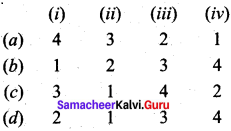Tamilnadu Samacheer Kalvi 12th Commerce Notes Chapter 24 Types of Entrepreneurs Notes
→ Entrepreneurs in business are different according to the type of activity undertaken by him/her. The types may be depending upon the function, business, technology, area and ownership. ‘
→ Classification according to function: Innovative entrepreneur, Imitative entrepreneur, Fabian entrepreneur, Drone entrepreneur.
→ According to type of business: Business entrepreneur, Trading entrepreneur, Industrial entrepreneur, Retail entrepreneur and service entrepreneur.
→ Based on Technology: Technical entrepreneur, Non-technical entrepreneur, professional entrepreneur.
→ Classification based on motivation: Pure entrepreneur, Induced entrepreneur, Motivated entrepreneur, Spontaneous entrepreneur.
→ Based on development: First generation entrepreneur, Modem entrepreneur, Classical entrepreneur. .
→ Classification according to area: Urban entrepreneur, Rural entrepreneur.
→ Based on ownership: Private entrepreneur, State entrepreneurship, Joint entrepreneurship.
